Prenatal Exercise Program Design: Exercise Type
Choosing the type of exercise that is best tolerated during pregnancy depends on the following considerations:
- Which activities the client enjoys or is skilled at performing
- Whether the activity poses any risk to the mother or fetus
- Is she is able to do the activity without being compromised by balance and center of gravity changes
- Can the activity be easily modified as pregnancy progresses
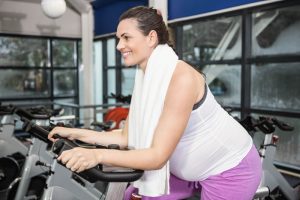 Weight-bearing exercise such as walking, dancing, and running help maintain bone mass and some studies suggest they are more effective for keeping pregnancy weight gain within normal limits. As pregnancy progresses some women may not be able to continue weight-bearing exercise because of back or round ligament pain. If modifications such as wearing a belly support don’t relieve discomfort, switching to non-weight-bearing activities such as swimming, stationary biking, or other types of stationary exercise equipment is recommended.
Weight-bearing exercise such as walking, dancing, and running help maintain bone mass and some studies suggest they are more effective for keeping pregnancy weight gain within normal limits. As pregnancy progresses some women may not be able to continue weight-bearing exercise because of back or round ligament pain. If modifications such as wearing a belly support don’t relieve discomfort, switching to non-weight-bearing activities such as swimming, stationary biking, or other types of stationary exercise equipment is recommended.
Absolute and relative contraindicated activities for pregnant women are listed below. Pregnant women should always consult with their healthcare provider before taking part in any exercise program and assess the risk/benefit ratio whenever there is a question about the safety of any activity during pregnancy. Keep in mind that activities such as downhill skiing must be assessed for risks that are not controllable, such as the effect of high altitude on oxygen delivery to the fetus.
Contraindicated Activities for Pregnant Women
- High-altitude sports
- Water-skiing
- Hockey
- Gymnastics
- Horseback riding
- Absolute
- Downhill skiing
- Scuba diving
You can also view Catherine’s previous articles on exercise intensity and duration.
For more information on prenatal and postpartum exercise and our CE correspondence course, “Prenatal and Postpartum Exercise Design” please visit, www.ppfconsulting.com
Article reprinted from Catherine’s Maternal Fitness blog with permission.
Catherine Cram, MS, is the owner of Comprehensive Fitness Consulting, a company that provides pre- and postnatal fitness certifications and information to hospitals, health & wellness organizations and the military.

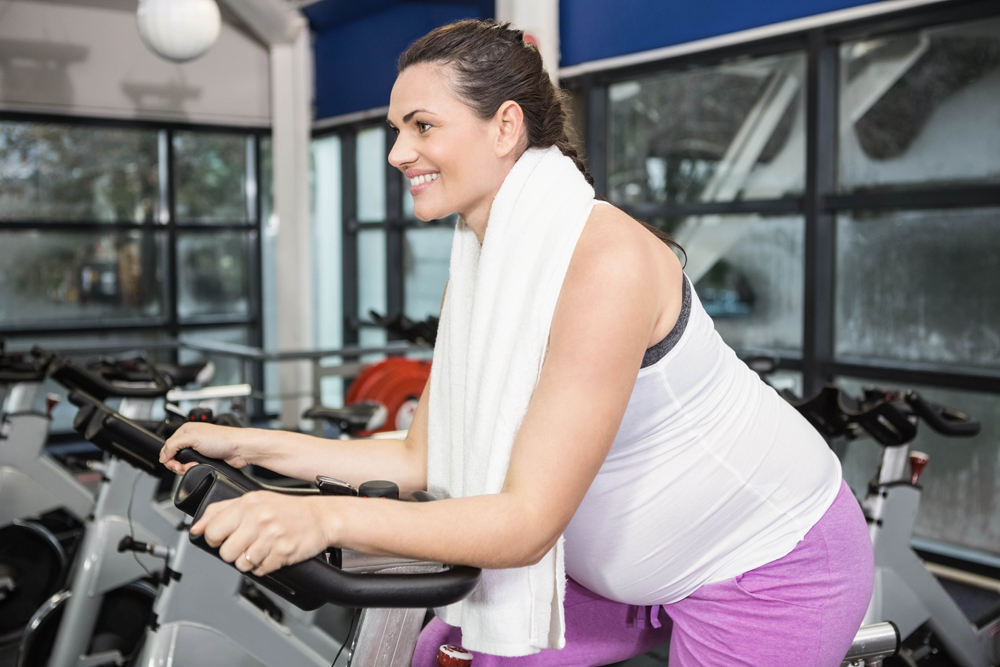
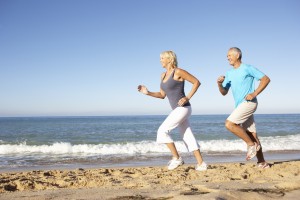
 How else can it affect us?
How else can it affect us?
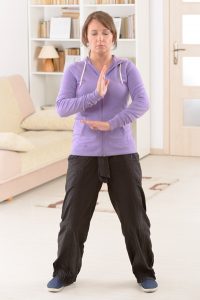 The studies concerned with the effect of Tai Chi on
The studies concerned with the effect of Tai Chi on 
 Rebounding is a complete cellular exercise, stimulating the activity of the lymphatic system (a critical part of the immune system). Rebounding 3-5 times per week at a minimum of 10-15 minutes at a time is highly beneficial. It is effective at a minimal bounce, using acceleration and deceleration, with each bounce, to open and close the one-way valves between the lymphatic system and the cells. Lymphatic fluid surrounds all of the cells of the body. While bounding toxins, poisons, and metabolic waste are pulled out of the cells into the lymph fluid, while oxygen and nutrients (transferred previously at the capillaries, from the blood) are pulled in the cells from the lymph fluid. Within the lymph system are lymphocytes, for example- white blood cells, which consume metabolic waste, bacteria, and dead cells. Rebounding keeps the lymph system moving and unplugged, so lymphocytes have free reign to do their job. More importantly, bounding does this without stressing the hips, knees, or ankles, or creating shin-splints. It can be done on a daily basis or multiple times per day without creating overuse injury.
Rebounding is a complete cellular exercise, stimulating the activity of the lymphatic system (a critical part of the immune system). Rebounding 3-5 times per week at a minimum of 10-15 minutes at a time is highly beneficial. It is effective at a minimal bounce, using acceleration and deceleration, with each bounce, to open and close the one-way valves between the lymphatic system and the cells. Lymphatic fluid surrounds all of the cells of the body. While bounding toxins, poisons, and metabolic waste are pulled out of the cells into the lymph fluid, while oxygen and nutrients (transferred previously at the capillaries, from the blood) are pulled in the cells from the lymph fluid. Within the lymph system are lymphocytes, for example- white blood cells, which consume metabolic waste, bacteria, and dead cells. Rebounding keeps the lymph system moving and unplugged, so lymphocytes have free reign to do their job. More importantly, bounding does this without stressing the hips, knees, or ankles, or creating shin-splints. It can be done on a daily basis or multiple times per day without creating overuse injury.

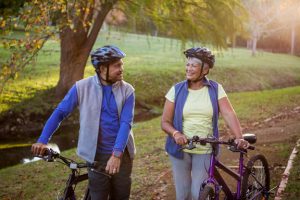 ften when we hear the term “fitness” – we automatically think of our physical health. Being mentally fit is equally as important. Cognitive fitness is a state of optimized ability to reason, remember, learn, plan and adapt that is enhanced by certain attitudes, lifestyle choices, and exercises. Better cognitive fitness translates into the ability to make better decisions, solve problems, and deal with stress and change. Neurogenesis is the process of developing new chemical messengers called neurons in the brain. This process can be profoundly affected by how you live your life. Here are eight strategies to help you facilitate the process of neurogenesis and have optimal cognitive functioning:
ften when we hear the term “fitness” – we automatically think of our physical health. Being mentally fit is equally as important. Cognitive fitness is a state of optimized ability to reason, remember, learn, plan and adapt that is enhanced by certain attitudes, lifestyle choices, and exercises. Better cognitive fitness translates into the ability to make better decisions, solve problems, and deal with stress and change. Neurogenesis is the process of developing new chemical messengers called neurons in the brain. This process can be profoundly affected by how you live your life. Here are eight strategies to help you facilitate the process of neurogenesis and have optimal cognitive functioning: Eat Specific Healthy Foods: Food plays a vital role in the health and proper functioning of the brain. Strive to eat real, whole foods such as fruit, vegetables, whole grains and lean meats – and drink eight 8oz bottles of water each day to keep brain cells hydrated. Apples, avocados, blueberries, unsalted nuts, broccoli and brown rice are great food choices for brain health.
Eat Specific Healthy Foods: Food plays a vital role in the health and proper functioning of the brain. Strive to eat real, whole foods such as fruit, vegetables, whole grains and lean meats – and drink eight 8oz bottles of water each day to keep brain cells hydrated. Apples, avocados, blueberries, unsalted nuts, broccoli and brown rice are great food choices for brain health.
 Thank you for being so honest. Your honesty brought up a topic that many people might have already touched on or made themselves aware of, but yesterday I saw another “twist.” Here is how it started:
Thank you for being so honest. Your honesty brought up a topic that many people might have already touched on or made themselves aware of, but yesterday I saw another “twist.” Here is how it started: release, meditation, whatever you want to call it. This also forces me to BREATHE deeply, which I think has more benefits to our minds than we can ever know. And just being in my own head space with my music, my movement and my breathing is what releases at least 50% of my anxiety. The workouts help me release some of the negative chaos in my head and body.”
release, meditation, whatever you want to call it. This also forces me to BREATHE deeply, which I think has more benefits to our minds than we can ever know. And just being in my own head space with my music, my movement and my breathing is what releases at least 50% of my anxiety. The workouts help me release some of the negative chaos in my head and body.”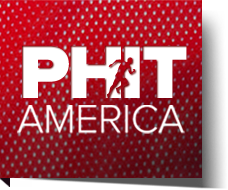
 The PHIT Act (Personal Health Investment Today) H.R. 1218 (U.S. House of Representatives) & S.2218 (U.S. Senate) is pending legislation that expands the IRS definition of a medical expense to include physical activity as a form of prevention. The practical impact of this definitional change would allow consumers to use their pre-tax medical accounts (HSAs & FSAs) on physical activity expenses to promote healthy lifestyles. The PHIT Act is an innovative concept that helps address two major Congressional concerns: (1) rising health care costs (2) the budget deficit. The rise in sedentary lifestyles is a major contributor to higher obesity rates and an increased incidence of expensive, preventable chronic illnesses. The PHIT Act will help reverse the ‘Inactivity Pandemic’ by providing an economic incentive to invest in physical activity. If enacted, physical activity expenses could be reimbursed using money in pre-tax medical accounts.
The PHIT Act (Personal Health Investment Today) H.R. 1218 (U.S. House of Representatives) & S.2218 (U.S. Senate) is pending legislation that expands the IRS definition of a medical expense to include physical activity as a form of prevention. The practical impact of this definitional change would allow consumers to use their pre-tax medical accounts (HSAs & FSAs) on physical activity expenses to promote healthy lifestyles. The PHIT Act is an innovative concept that helps address two major Congressional concerns: (1) rising health care costs (2) the budget deficit. The rise in sedentary lifestyles is a major contributor to higher obesity rates and an increased incidence of expensive, preventable chronic illnesses. The PHIT Act will help reverse the ‘Inactivity Pandemic’ by providing an economic incentive to invest in physical activity. If enacted, physical activity expenses could be reimbursed using money in pre-tax medical accounts. HOW WOULD THE PHIT ACT WORK?
HOW WOULD THE PHIT ACT WORK?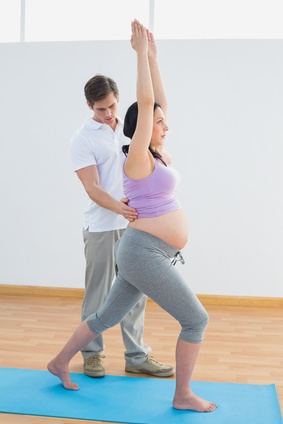
 Exercise duration during pregnancy should reflect a woman’s current level of fitness and the type of activity she is doing. If you’re working with someone who’s just starting a prenatal exercise program the duration will be shorter (15-20 minutes) and progress slowly over time to 30-60 minutes. A pregnant woman who is already taking part in a fitness routine can continue with her current duration level, but exercise duration should be modified as needed to enable her to achieve a moderate to somewhat hard level of intensity without discomfort or undue fatigue.
Exercise duration during pregnancy should reflect a woman’s current level of fitness and the type of activity she is doing. If you’re working with someone who’s just starting a prenatal exercise program the duration will be shorter (15-20 minutes) and progress slowly over time to 30-60 minutes. A pregnant woman who is already taking part in a fitness routine can continue with her current duration level, but exercise duration should be modified as needed to enable her to achieve a moderate to somewhat hard level of intensity without discomfort or undue fatigue.
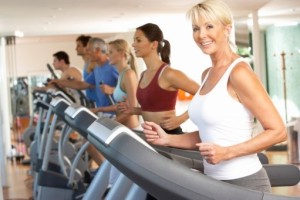 Why Exercise is Good
Why Exercise is Good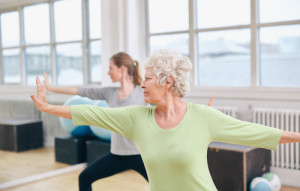 Doing your exercises right
Doing your exercises right